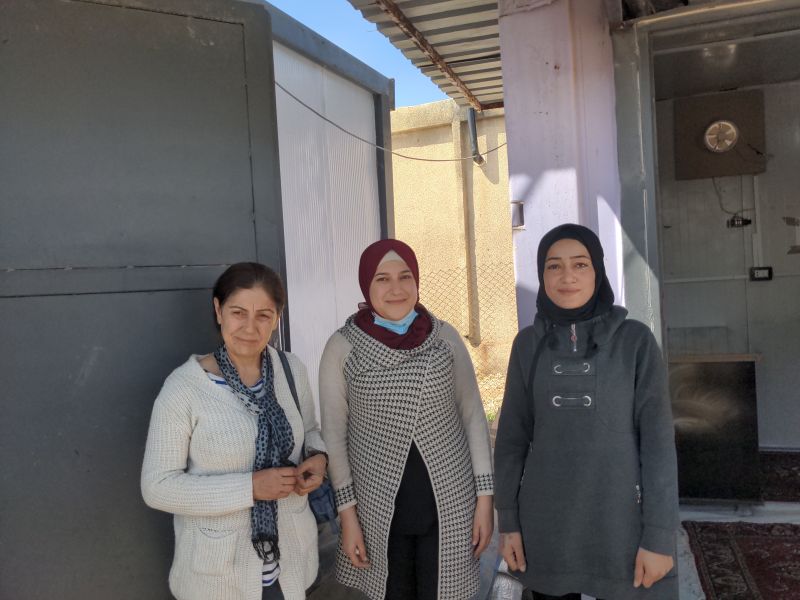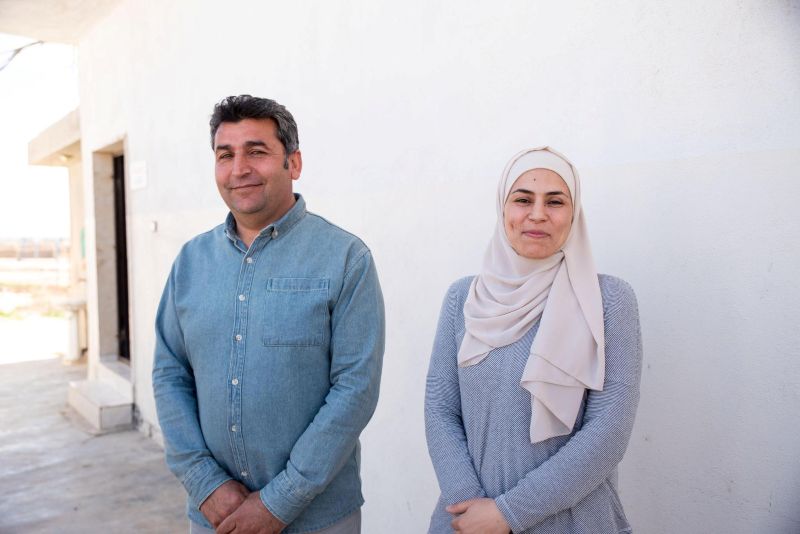Report from Rojava


Syria is home to the second-largest population of internally displaced people in the world with over 7 million people living away from their homes at the end of 2023. After the fall of Bashar al-Assad’s authoritarian regime in December 2024, some have already managed to return home, with many others hoping to be able to in the coming months. However, for those originating from Syrian lands currently under occupation — by Israel in the Southwest and Turkey in the North —, the future remains uncertain. On top of that, the advances of the Turkish military occupation, along with increasing Islamist activity, threaten to trigger new waves of displacement.
In the past several years, the so-called Syrian National Army (SNA), a group of militias directly funded by the Turkish state, has taken over major Kurdish cities in Syria, like Afrin or Serêkaniyê. Numerous human rights abuses have been reported in the aftermath, including violent anti-Kurdish oppression. This has caused thousands of inhabitants to flee their homes and seek refuge in the Autonomous Administration of North East Syria (AANES), where a significant part of the population lives in refugee camps. Their numbers are increasing after the SNA took over the city of Manbij in December, which was previously under AANES control.
Barzan Abdallah, co-chair of the Washokani camp, explains that “after the overthrowing of the Assad regime, many people had hopes of going home.” This camp, with about 24 thousand inhabitants, was established to welcome refugees from Serêkaniyê after the SNA captured the city in 2019, but many of them were already in Serêkaniyê as refugees from Afrin and other cities. Some have been living in camps for almost a decade, often raising young children. However, the Turkish military shows no sign of retreating, and returning home still seems impossible for now.


Free Women’s Foundation team members providing trainings in Washokani camp (Jowani Nassin to the right)
The question of refugees is central to the negotiations between the AANES and Hay’at Tahrir al Sham (HTS), the new government in Damascus. The agreement signed in March between the two parties ratifies the shared will to “ensure the return of all displaced Syrians to their towns and villages.” This has allowed the successful repatriation of some internally displaced people in the past month, but Abdallah reports that “Turkey continues to claim that [Serêkaniyê] is not Syrian” and refuses to recognise the agreement.
Malek Salah, other co-chair of the camp, calls on foreign states and international organisations “to give guarantees for internally displaced people to go home.” She recalls previous events where refugees had been given official authorisation to return to their Turkish-occupied home city of Afrin, but were met with arbitrary arrests and torture when arriving there. Salah cites the lack of trust and dignity as a major obstacle to refugees returning home.


Barzan Abdallah and Malek Salah, co-chairs of Washokani camp
In current conditions, the camp’s inhabitants struggle with access to proper healthcare, water, and insufficient protection from extreme weather. According to Salah, women are disproportionally affected as the task of caring for the household and family typically falls on them. Overcrowding is also an issue as there is no more than one tent assigned to each family.
These shortcomings have been made catastrophically worse after the withdrawal of the American funding program USAID. Donald Trump announced the cut of all international aids almost immediately as he stepped into office in January. According to Abdallah, “after the closure of USAID, large needs have arisen” in Washokani camp.
Jowani Nassin, who provides training for the camp’s inhabitants through the Free Women’s Foundation, has reported difficult access to funding and necessary supplies such as fabric for sewing classes or needles and cotton for first aid classes. She adds: “We tried building connections with NGOs before but they refused. Most organisations only provide funding for the 18-25 age bracket, whereas we teach women of any age.”
The AANES has also been calling on the international community for years to help manage ISIS prison camps. Following the SDF’s victory over ISIS in 2019, 70,000 ex-ISIS fighters are held in camps around the AANES, with an additional 60,000 family members in separate camps, mostly women and children. Foreign states that have citizens in those camps continue to largely refuse to repatriate their citizens and engage a de-radicalisation process at home. This mostly concerns North African countries, but also European countries including the UK.
To manage the situation, the AANES tries to process camp detainees through the justice system, and to reinsert the women and children in society after rehabilitation programs led by the Free Women’s Foundation. The task is colossal, and the lack of funding makes it near impossible. Buthina Abod, the spokeswoman of the women’s organisation Zenobia in Raqqa, also reported air strikes by the Turkish state on prison camps with the aim of awakening ISIS activity and destabilising the AANES.


A group of girls who live in Washokani camp and attend a Free Women’s Foundation training course
The negotiations between HTS and the SDF are reported to include discussions of HTS stepping in to help manage the camps in the AANES, including the prison camps. This could relieve the pressure on the AANES, but it remains to be seen how willing HTS will be to confront Turkey, who they are allied to. HTS is also an islamist group stemming from Al Qaeda, which leaves doubts as to their commitment to de-radicalise ex-ISIS members.
Salah expressed trust in the negotiations, claiming that “the AANES will not agree if HTS doesn’t follow the rights of the people in the camp,” and adds that if the administration signs an undemocratic agreement, “then we will not accept it.” A more detailed deal should be reached by the end of the year, hopefully clarifying the fate of the thousands of internally displaced in North-East Syria.
